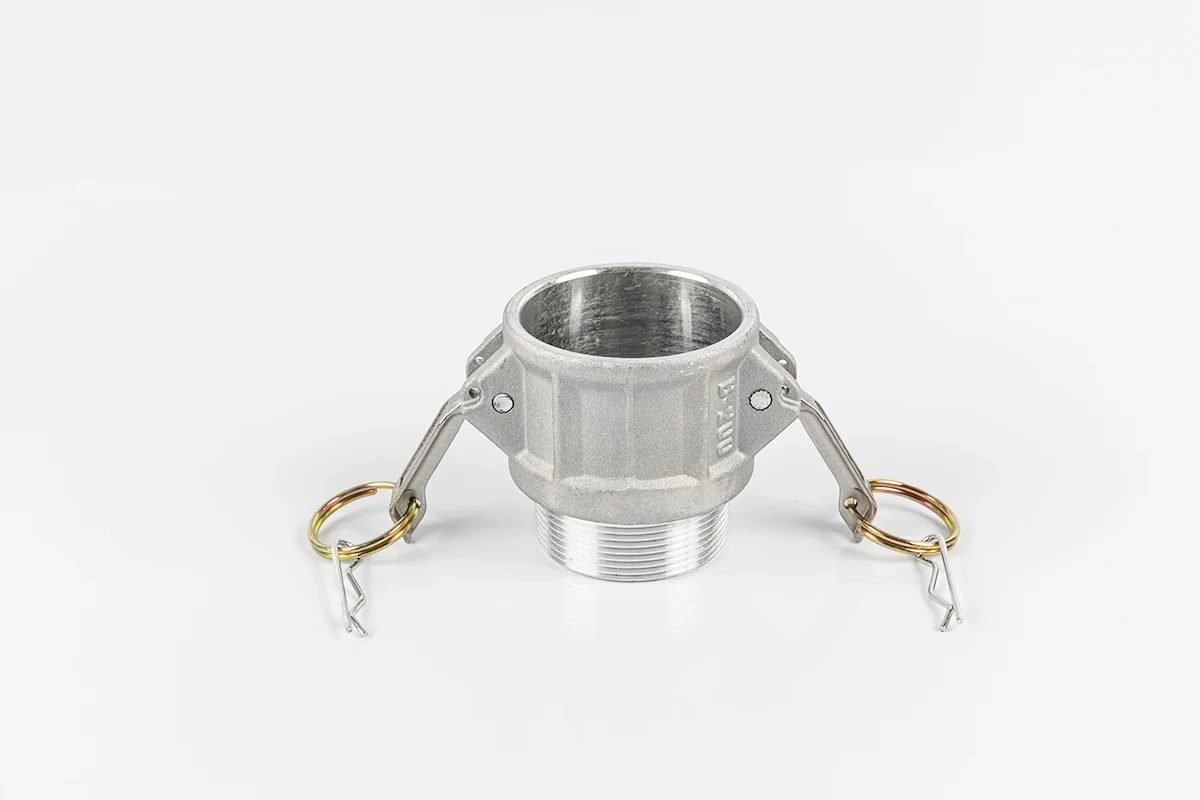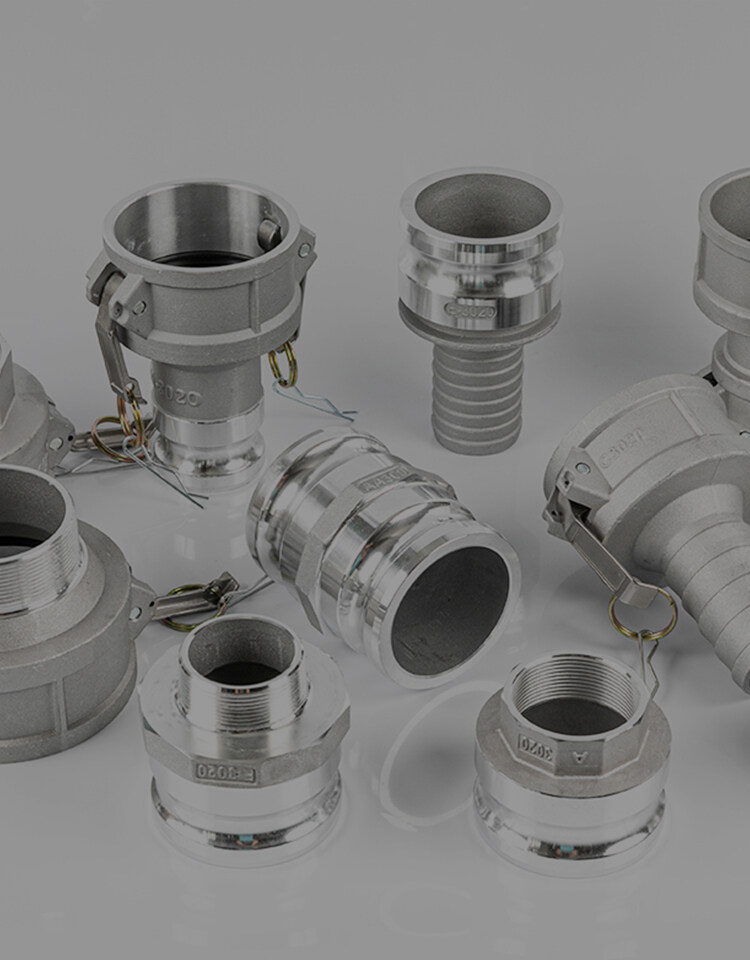Erreur de format d'e-mail
emailCannotEmpty
emailDoesExist
pwdLetterLimtTip
inconsistentPwd
pwdLetterLimtTip
inconsistentPwd

Nouvelles
Ici, vous pouvez décrire un morceau de texte que vous souhaitez exprimer

Maximizing Efficiency with SS Quick Coupling Solutions in Fluid Systems
The need for quick and reliable connections is paramount in the fast-paced world of industrial fluid handling. Stainless steel (SS) quick couplings have become the go-to solution for many industries, offering a perfect blend of durability, efficiency, and safety. These couplings facilitate rapid and secure connections between hoses, pipes, and other components, significantly reducing downtime and improving productivity. In this post, we will explore the intricacies of SS quick couplings, their integration with stainless grooved fittings, stainless hose and fittings, and the overall impact they have on fluid systems.
Understanding SS Quick Couplings:
SS quick couplings are mechanical devices designed to provide fast and easy connections without the need for tools or specialized labor. Made from high-grade stainless steel, these couplings are resistant to corrosion, high temperatures, and chemical wear, making them ideal for a wide range of applications. The quick-release mechanism allows for immediate disconnection, which is essential in emergency situations or when frequent changes are required in a system.
Advantages of SS Quick Couplings:
The incorporation of SS quick couplings into fluid transfer systems offers numerous advantages:
Time-saving connections and disconnections: With a simple push or pull, these couplings can be engaged or disengaged, saving valuable time during critical operations.
Minimized fluid spillage: The quick coupling design minimizes the risk of fluid loss when disconnecting lines, which is crucial for maintaining cleanliness and preventing waste.
High resistance to corrosion: Stainless steel’s resistance to rust and corrosion ensures that the couplings maintain their integrity even in harsh environments.
Long service life: The durability of stainless steel translates to a longer lifespan for the couplings, reducing the need for frequent replacements.
Compatibility with various fluids: The quick couplings can handle a range of fluids, from water and oils to aggressive chemicals, without degradation.
Key Components in SS Quick Coupling Systems:
A well-designed fluid system incorporates various components that work in harmony. These include stainless grooved fittings, stainless hose and fittings, stainless steel grooved couplings, and stainless steel hose fittings. Each component plays a vital role in ensuring a leak-proof and efficient system.
Stainless Grooved Fittings:
Stainless grooved fittings provide a method for connecting pipes or hoses with a secure and easily detachable joint. The grooved design allows for some flexibility in alignment, which can be beneficial in systems with movement or vibration. When paired with the quick couplings, the assembly and disassembly process becomes even more streamlined.
Stainless Hose and Fittings:
Selecting the right stainless hose and fittings is crucial for the performance and safety of the quick coupling system. These hoses and fittings must be able to withstand the operating pressures and temperatures of the system, as well as being compatible with the transferred fluids. High-quality stainless hoses and fittings, when used with the quick couplings, offer a robust and reliable solution for demanding applications.
Stainless Steel Grooved Coupling:
A stainless steel grooved coupling is a type of fitting that connects two sections of pipe or hose using a grooved clamp. This coupling provides a strong, yet easily detachable connection, which is ideal for systems that require frequent maintenance or alterations. The use of stainless steel ensures that the coupling can withstand corrosive environments and maintain its structural integrity.
SS Hose Fittings:
SS hose fittings are the connectors that attach the hose to the quick coupling and other system components. These fittings must provide a secure seal to prevent leaks and ensure the smooth flow of fluids. The compatibility of SS hose fittings with the quick couplings is essential for maintaining the overall effectiveness of the fluid transfer system.
Applications of SS Quick Couplings:
The quick couplings are versatile and can be utilized in various industries, including but not limited to:
Chemical processing: Handling aggressive chemicals requires couplings that can resist corrosion and chemical attack.
Food and beverage: The quick couplings are ideal for applications where cleanliness and non-toxic connections are essential.
Pharmaceuticals: In sterile environments, the quick and clean connections provided by SS couplings are invaluable.
Hydraulics: High-pressure systems benefit from the leak-proof and robust connections of the quick couplings.
Installation and Maintenance Tips for SS Quick Couplings
Proper installation and regular maintenance are critical for the performance and longevity. Here are some detailed tips to ensure that your quick couplings are installed correctly and maintained effectively:
Installation Tips:
Compatibility Check:
● Ensure that the quick coupling is compatible with the fluid being transferred, as well as the temperature and pressure conditions of the system.
● Verify that the coupling size matches the hoses or pipes it will be connected to.
Inspection Before Installation:
● Inspect the quick coupling for any signs of damage or defects.
● Check the seals and gaskets to ensure they are intact and properly seated.
Clean and Prepare:
● Clean all components thoroughly to remove any debris or contaminants that could affect the seal.
● Prepare the ends of the hoses or pipes by ensuring they are cut cleanly and free from burrs.
Follow Manufacturer’s Guidelines:
● Read and understand the manufacturer’s installation instructions.
● Use the recommended tools and techniques to avoid damaging the coupling.
Secure Connection:
● Tighten the coupling according to the manufacturer’s specified torque settings.
● Avoid over-tightening, which can cause damage to the coupling or create stress points in the system.
Test for Leaks:
● Once installed, perform a pressure test to ensure there are no leaks.
● Check the connection under operating conditions to verify that it is secure.
Maintenance Tips:
Regular Inspection:
● Schedule regular inspections of the quick couplings to check for wear, corrosion, or mechanical damage.
● Look for any signs of leakage, which could indicate a failing seal or gasket.
Cleaning:
● Clean the couplings regularly with appropriate cleaning agents that are safe for stainless steel.
● Remove any accumulated dirt or residue that could interfere with the operation of the coupling.
Seal and Gasket Maintenance:
● Replace seals and gaskets at the first sign of wear or damage to maintain a leak-proof connection.
● Keep a supply of replacement seals and gaskets on hand for quick repairs.
Lubrication:
● Lubricate the moving parts of the coupling, such as the locking mechanism, as recommended by the manufacturer.
● Use a compatible lubricant that will not degrade the seals or contaminate the fluid.
Correct Usage:
● Train personnel on the proper use of the quick couplings to prevent misuse or accidental disconnection.
● Ensure that the coupling is used within its designed pressure and temperature range.
Storage:
● When not in use, store the quick couplings in a clean, dry environment to prevent corrosion.
● Protect the couplings from extreme temperatures and exposure to UV light, which can degrade some materials.
Replacement Parts:
● Use only genuine replacement parts from the manufacturer to ensure compatibility and reliability.
● Keep a record of maintenance activities and part replacements to track the service life of the couplings.
Troubleshooting Common Issues with SS Quick Couplings
Even with proper installation and maintenance, the quick couplings can sometimes encounter issues that can disrupt your fluid system’s operation. Here are some common problems and troubleshooting steps to help you quickly resolve them:
Leakage at the Coupling Interface:
● Inspect the seals and gaskets for wear or damage and replace them if necessary.
● Ensure that the coupling is correctly aligned and fully engaged before locking.
● Check for any foreign objects or debris that might be preventing a proper seal and clean the area thoroughly.
● Verify that the coupling has not been over-tightened, as this can deform seals and cause leaks.
Difficulty Connecting or Disconnecting:
● Lubricate the moving parts of the coupling if they are stiff or difficult to operate.
● Check for any damage to the coupling mechanism, such as bent or broken parts, and replace if needed.
● Ensure that there is no pressure build-up in the system that could be making disconnection difficult. Always relieve pressure before attempting to disconnect.
Incompatibility with Fluids:
● Confirm that the materials of the quick coupling are suitable for the fluids being used. Incompatible materials can lead to corrosion and leaks.
● If the coupling is degrading, consider switching to a coupling made from a more resistant material or with appropriate protective coatings.
Coupling Will Not Lock Securely:
● Examine the locking mechanism for signs of wear or damage. Replace any components that are not functioning correctly.
● Make sure that the coupling components are clean, as dirt and grime can prevent the locking mechanism from engaging properly.
● Check for proper installation and alignment, as misalignment can prevent the coupling from locking.
Unexpected Disconnection:
● Inspect the locking mechanism to ensure it is engaging fully and is not worn or damaged.
● Evaluate the system’s pressure and ensure it is within the coupling’s rated capacity. Excessive pressure can cause disconnections.
● Check for any signs of vibration or movement that could be causing the coupling to disengage, and secure the system to minimize these forces.
Corrosion or Material Degradation:
● Look for signs of rust or corrosion, particularly if the coupling is used in a harsh environment or with aggressive chemicals.
● Consider using couplings made from higher grades of stainless steel or with additional surface treatments for enhanced corrosion resistance.
● Ensure that the system is properly cleaned and that any chemicals are thoroughly flushed after use to prevent corrosion.
Wear and Tear:
● Regularly inspect the coupling for signs of wear, including scratches, dents, or erosion.
● Replace the coupling if wear is significant, as this can affect performance and safety.
● Implement a preventative maintenance schedule to replace couplings and components before they fail due to wear.
Safety Considerations:
Safety is paramount when working with SS quick couplings. Always consider the following:
Understand the maximum pressure and temperature ratings of the couplings.
Ensure compatibility of the coupling materials with the fluids being transferred.
Wear appropriate personal protective equipment (PPE) when handling couplings.
Train personnel on the correct use and handling of quick couplings.
Conclusion:
SS quick couplings are an essential component in modern fluid systems, offering a combination of speed, reliability, and safety. By understanding the role of related components such as stainless grooved fittings and SS hose fittings, and by adhering to proper installation and safety practices, industries can maximize the efficiency and longevity of their fluid transfer operations. Whether in high-pressure hydraulics, sterile pharmaceutical manufacturing, or corrosive chemical processing, the quick couplings provide the performance and durability needed to maintain a competitive edge.

